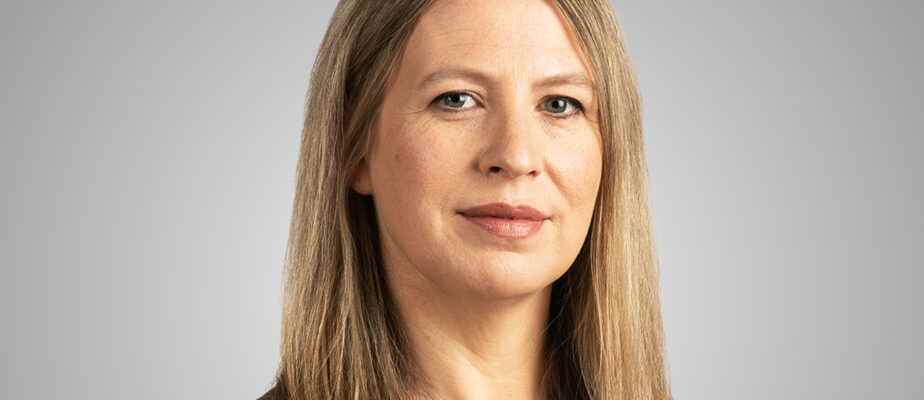An independent committee of experts recommends scrapping the statue of John A. Macdonald and, everywhere, we are warned: bad decision! That would be giving in to vandalism!
It would be giving in to the thugs who ransacked the monument in Place du Canada in the summer of 2020. This apparent capitulation seems to bother everyone, even sovereignist commentators, who are far from venerating one of the founding fathers of Canada.
It is the vandalism that shocks, the disorder in our streets, today and now, much more than the fate reserved for the memory of John A. Macdonald.
Of course we must refuse vandalism. I do not disagree. But I wonder: is the only way to achieve this to reinstall this statue on its base, at all costs, without asking us any questions?
To set an example, to avoid a future rampage, are we doomed to glorify, ad vitam æternam, a controversial historical figure?
At the very least, we must be able to discuss it.
For the past week, we have been careful not to come to the defense of John A. Macdonald, but of History with a capital H. We are told repeatedly that it is absurd to judge historical figures by the yardstick of moral of the day. We are reminded that the values at the time were not the same. And that if we try too hard to correct the past, we risk erasing whole sections of our common history.
True that one wonders who will be the next to fall by the wayside of contemporary virtue. Christopher Columbus, discoverer of the Americas… but also a brutal colonizer of the Caribbean? Winston Churchill, hero of the Second World War… guilty of having flirted with racist ideas? Or, why not, Gandhi, world icon of non-violence… who harbored nasty prejudices against black people in South Africa?
True, therefore, that the question arises: how far will the great unbolting go?
But in the specific case of John A. Macdonald, the argument of values that would have changed does not hold water. Because the Montreal statue, erected in 1895, has been contested… since day one!
“The fate reserved for Louis Riel was still fresh in people’s memory” when the monument was inaugurated, recalls historian Martin Pâquet, of Laval University. The Métis leader had been hanged ten years earlier, in 1885. Among French Canadians, many had not digested that the Prime Minister refused him the right to appeal his conviction.
The passage of time has done nothing to fix things. In the 1960s and 1970s, separatists doused the statue with paint. In 1992, vandals claiming to be from the Front de libération du Québec sawed off his head. In 2020, it was in the name of the fight against racism that she lost her mind again.
“The reasons why statues are controversial vary over time,” says Martin Pâquet. Over the years, wars and revolutions, monuments change meaning and sometimes come to play a completely different role in the collective memory.
Sometimes change takes decades. Sometimes it’s more brutal. Barely a month after the start of the Russian invasion, the Ukrainians had already unbolted a statue in Kyiv dedicated to the friendship between the two countries.
In Baghdad, jubilant citizens rushed to unbolt a statue of Saddam Hussein as soon as the dictator’s fall was announced on April 9, 2003. On that day, they did not erase a page of history from Iraq. They wrote a new one.
“A statue is a symbol to bring people together, explains Martin Pâquet. If people are brought together in a positive way because you have a symbol that matches their values, great. »
Otherwise ? Otherwise, well, you have to change the symbol. The historian believes that, in the circumstances, discarding the statue of John A. Macdonald is a wise recommendation.
“The priority, when you are a political leader, is to ensure public order and civil peace. If you erect a statue that causes disorder, after a while it will start again. »
It is not a question of yielding to vandalism, but of calmly debating the place of this character in the public space. Citizens will be consulted on December 7. The committee will submit its final report in February 2023.
In the meantime, let’s remember that “statues are not neutral historical artefacts”, as historians Pierre-Luc Brisson and Laurent Turcot pointed out in our pages in 2017.
“A statue is never anything more than the monumental representation of the values and the story that a population intends to tell to itself. And like any story, it may be called upon to evolve over time, ”they wrote.
It is not a question of denying the past, but of recognizing the present. Recognize that in many Indigenous communities the wounds of residential schools are not healed.
This is not ancient history. It happens here and now. We would turn the iron in the wound by persisting in glorifying the man who presided over the establishment of the residential school system, so devastating for generations of Aboriginal children.
It is about recognizing that the time is for reconciliation. And that the statue of John A. Macdonald belongs to the museum.
